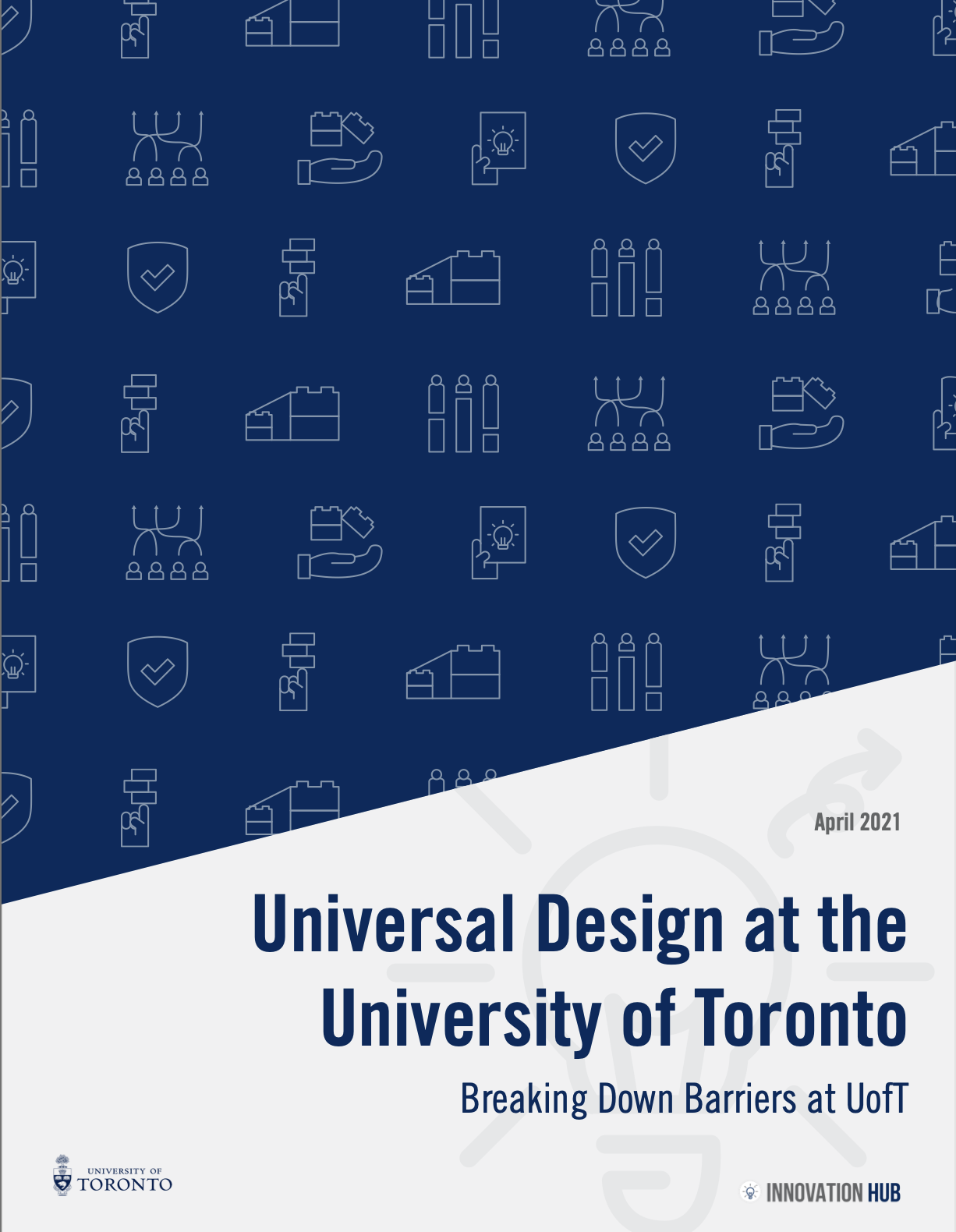Universal Design at the University of Toronto: Creating Accessible Designs
With a population of over 93,000 students at the university of Toronto, this task is a challenge. It involves considering the experiences of all students, including students with different levels of ability, learning needs, and identified disabilities. The Innovation Hub takes an equity-driven, human-centered approach to understanding the student experience through empathy-based and story-based interviewing techniques. For this project, we collected stories from students with disabilities as well as support staff at UofT.
KEY FINDINGS
Centering students with disabilities at the university benefits everyone’s learning.
The current barriers that students face in their learning and in seeking accessibility support are rooted in the current university-wide approach. This approach makes accessibility a secondary matter as opposed to building it centrally into university design. We found this key finding in three themes:
- Learning About Diverse Needs
- Learning About Barriers
- Learning About Support
Universal design at UofT aims to center all students, thereby creating an inclusive, accessible, and equitable environment that works with all students.

Learning About Diverse Needs: Students, as well as staff and instructors, are learning about students' different abilities and their specific needs. This learning process includes complex challenges, such as understanding what makes up a disability, how disability intersects with identity, and what are student needs.
Learning About Barriers: Students faced persistent barriers on campus regarding their accessibility needs. These barriers existed in the classroom, on campus, while commuting, and navigating university life more broadly. Ultimately, the learning process itself should not be a barrier to students. If accessibility for all students was built into the design of learning and campus life at UofT, then the student experience would be more accessible, and students would not need to navigate secondary accommodation.
Learning About Support: Students want to succeed in their studies without feeling like they require help or special treatment. But, for many at UofT, the experience is more about trying to survive. As a result, they may need to seek support. Seeking help and support can be difficult, especially when many students are increasingly accessing the services at the same time and the institutional landscape is confusing and complex.
